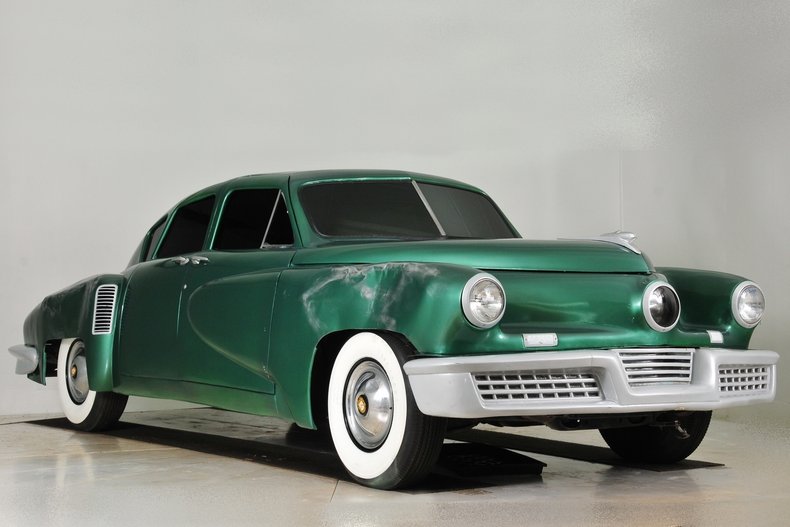The Tucker 48, also known as the Tucker Torpedo, was a groundbreaking American automobile that left an indelible mark on automotive history. Designed by Preston Tucker and introduced in 1948, the Tucker 48 was a revolutionary vehicle that showcased advanced safety features, innovative design elements, and cutting-edge technologies. Despite its short production run and eventual demise, the Torpedo remains an iconic symbol of automotive innovation and an embodiment of the American entrepreneurial spirit.
Unveiling the Tucker 48
Preston Tucker, a visionary entrepreneur, aimed to create a vehicle that would revolutionize the automotive industry. On June 19, 1947, the Tucker 48 made its grand debut, captivating the public and industry professionals alike. The car’s sleek and aerodynamic design, featuring a wide front grille, pontoon fenders, and a distinct third headlight that swiveled with the steering, immediately caught attention.
Safety First
The Tucker 48 was way ahead of its time when it came to safety features. Preston Tucker prioritized passenger protection and incorporated several groundbreaking safety innovations. The car featured a reinforced safety cage, a padded dashboard, and a pop-out windshield to minimize injuries during accidents. Additionally, the car introduced a unique “cyclops” center headlight that turned with the steering wheel, providing improved visibility during cornering.
Engineering Marvels
Underneath its sleek exterior, the Tucker 48 boasted impressive engineering advancements. It was powered by a rear-mounted, aluminum-block flat-six engine, capable of producing 166 horsepower. This powerful engine, coupled with an innovative suspension system, offered a smooth and comfortable ride. The Tucker 48 also introduced disc brakes on all four wheels, a rarity at the time, ensuring efficient and reliable braking performance.
Tucker 48 Futuristic Design
The Tucker 48’s futuristic design captivated the imagination of car enthusiasts. With its low-slung silhouette, flowing lines, and distinctive fenders, the car exuded an aura of sophistication. The doors opened upward in a gull-wing style, adding to its unique appeal. Moreover, the interior of the car was spacious, featuring comfortable seating and innovative instrumentation.
Challenges and Controversies
Despite the initial excitement surrounding the Tucker 48, the vehicle faced numerous challenges and controversies. Production delays, financial difficulties, and allegations of stock fraud plagued Preston Tucker and his company. These issues ultimately led to the downfall of the Tucker Corporation, with only 51 Torpedos produced. Nevertheless, the Tucker 48’s impact on the automotive industry remained significant.
Legacy and Influence
Although the Tucker 48’s production was short-lived, its legacy and influence continued to resonate. The car became a symbol of innovation, entrepreneurship, and American ingenuity. The Tucker 48’s advanced safety features, such as the padded dashboard and pop-out windshield, laid the groundwork for future automotive safety standards. Furthermore, its daring design elements, like the gull-wing doors and cyclops headlight, inspired generations of car designers.
Tucker 48 in Popular Culture
The Tucker 48’s fame extended beyond the automotive realm and found its way into popular culture. The 1988 film “Tucker: The Man and His Dream,” directed by Francis Ford Coppola, portrayed the story of Preston Tucker’s ambitious venture. The film shed light on the challenges faced by Tucker and the enduring impact of the car on the automotive industry.
The Tucker 48 remains an icon of automotive history, representing a bold vision that aimed to transform the industry. Despite its limited production run, this trailblazing vehicle showcased advanced safety features, futuristic design elements, and engineering innovations. The legacy of the Tucker 48 endures, reminding us of the power of innovation and the pursuit of automotive excellence.
